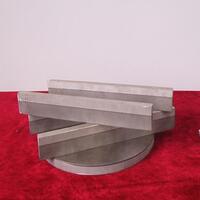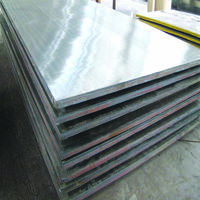1. Introduction
When you hear ‘metal clad,’ you might picture a sleek modern home with a corten steel facade or a rugged industrial shed wrapped in corrugated steel. But metal clad goes far beyond aesthetics—it’s a functional, versatile solution used across construction, manufacturing, and electrical systems. At its core, metal clad refers to materials made by bonding two or more metals to combine their best properties. This article unpacks the metal clad meaning, explores common metal clad types, and compares key applications—from metal clad walls to metal clad electrical wire.

2. What Does ‘Clad Metal Meaning’ Really Refer To?
Clad metals are composite materials created by metallurgically bonding different metal layers. The goal? To get the corrosion resistance of one metal (like stainless steel or copper) with the strength or cost-efficiency of another (like carbon steel or aluminum). This process can be done through roll bonding, explosion bonding, or electroplating.
- Aluminum clad stainless steel offers lightweight strength with rust resistance.
- Stainless clad aluminum reverses the layers for different thermal or aesthetic needs.
- Titanium clad and copper nickel clad serve high-performance roles in aerospace and marine environments.
3. Architectural Metal Clad: Facades, Roofs, and Siding
In architecture, metal clad systems define modern design. Whether it’s a metal clad house or a commercial metal clad building, the choice of material impacts durability, maintenance, and visual appeal.
3.1 Corten Steel vs. Zinc vs. Copper
Corten steel siding develops a rust-like patina that protects the base metal—ideal for dramatic, low-maintenance facades. However, corten siding cost can be high, and runoff may stain adjacent surfaces.
Zinc metal siding and zinc clad roofs offer a softer gray finish that ages gracefully. A zinc clad dormer adds subtle elegance without the maintenance of painted systems.

Copper siding delivers unmatched longevity and a distinctive green patina over time, though it’s among the pricier options.
3.2 Standing Seam and Corrugated Systems
Standing seam siding—like colorbond standing seam or pac clad standing seam roof—provides clean lines and excellent water resistance. Vertical standing seam metal siding is especially popular for contemporary metal facade designs.
Exterior corrugated metal siding, often made from corten steel plate or galvanized steel, gives an industrial look and is common on metal clad sheds and warehouses. Corrugated steel facade systems are durable and cost-effective for large-scale projects.
4. Structural and Industrial Clad Metals
Beyond exteriors, clad metals play critical roles in heavy industry. Clad steel—such as aluminum clad steel or stainless clad aluminum—is used in pressure vessels, heat exchangers, and pipelines where corrosion resistance meets structural demand.
Aluminum clad pipe insulation protects against thermal loss while resisting environmental wear. Similarly, boiler plate steel may be clad with stainless or nickel alloys for chemical processing applications.
Common base materials include mild steel plate, carbon steel plate, and thick steel plate, often enhanced with overlays like chrome carbide or inconel 625 weld overlay for extreme conditions.

5. Electrical and Wiring Applications
Metal clad isn’t just for buildings—it’s vital in electrical safety. Metal clad electrical wire (often called MC cable) features insulated conductors wrapped in an interlocked metal armor, typically aluminum or steel.
Aluminum clad steel wire and cu clad wire are used where conductivity and mechanical protection must coexist. These cables can be surface-mounted and are approved for commercial use in many regions, including Pennsylvania.
Note: Metal clad wire differs from armored cable (AC) in grounding methods and installation rules—always check local codes before use.
6. Material Comparisons and Cost Considerations
Choosing the right metal clad type depends on environment, budget, and function. For example:
- Corten steel siding cost ranges higher than standard galvanized options but offers unique aesthetics and minimal upkeep.
- Zinc and copper siding command premium prices but last decades with no painting.
- Aluminum clad sheet and aluminum diamond plate are lighter and more affordable, ideal for non-structural cladding or interior accents like pac clad column covers or pac clad coping.
When sourcing materials like 316 stainless steel plate, 6061 T6 aluminum plate, or 3mm aluminium checker plate, consider local availability—searching ‘steel plate near me’ or ‘aluminium checker plate near me’ can save on shipping.
7. Conclusion
Metal clad is far more than a design trend—it’s a smart engineering solution that merges performance with style. From the rugged charm of a corten steel facade to the precision of aluminum clad stainless steel in industrial systems, clad metals offer tailored answers for countless challenges. Understanding the metal clad meaning and the differences between metal clad types empowers builders, architects, and engineers to make informed, durable choices for any project.
Our Website founded on October 17, 2012, is a high-tech enterprise committed to the research and development, production, processing, sales and technical services of ceramic relative materials such as Metal. Our products includes but not limited to Boron Carbide Ceramic Products, Boron Nitride Ceramic Products, Silicon Carbide Ceramic Products, Silicon Nitride Ceramic Products, Zirconium Dioxide Ceramic Products, etc. If you are interested, please feel free to contact us.
